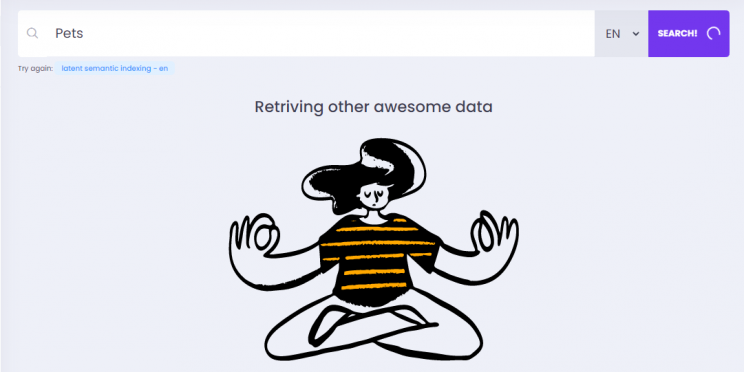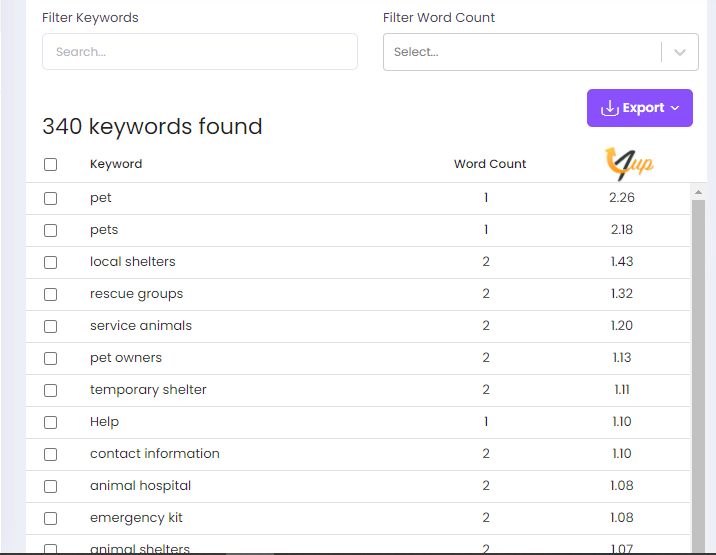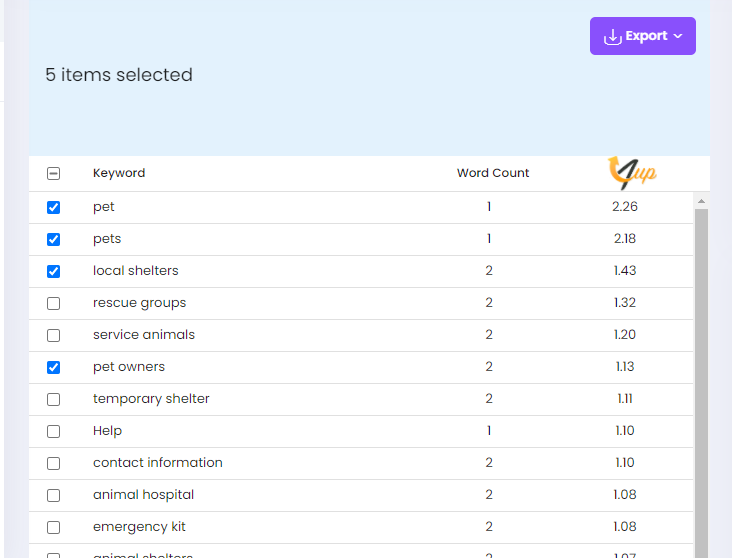Latent Semantic Indexing algorithm: What it does [Revealed]
Recently, there’s been a debate in the SEO community on whether keyword usage is still important to improve rankings or the focus should be shifted to topics instead.
Latent semantic indexing or LSI is the system used by search engines to understand the relationships between different search concepts and terms.
On the other hand, LSI keywords are vital for improving traffic to a website and creating more visibility to improve the rankings in the search results.
LSI keywords are the words and key phrases that the search engine sees as semantically related to a topic. For example, if you’re talking about houses, the LSI keywords might be “kitchen,” “tiny houses,” “safe houses,’ “guest house,” “cheap houses,” “homes for sale,” etc. In simpler terms, Latent semantic indexing is a system that analyzes the words used around a given topic.
What is Latent Semantic Indexing and what id does?
Search engines such as Google, Bing, DuckDuckGo use this system to get a full understanding of the content on a page and then checks for keywords that show up along a given term.
Latent semantic indexing makes it easy for searchers to find what they are looking for online, not what they’ve entered on the search engine.
For instance, if I wanted to have a burger, I might key in “best burgers near me.” When we have “best burger” as the topic, the search engine, Google in this instance, expects to see words like “beef,” “turkey burgers,” “egg’” “bread,”. These words will be highlighted on the search page because they are used on pages talking about burgers and in users’ searches.
A blog that just touches on “burgers” won’t have all those words but a high-end burger shop will and will be ranked higher. So, to summarize things, LSI keywords are the highlighted words that are not an exact match of what you searched for in the search engine. You can also define a highlighted word as the best matching phrase to what you searched for in the search engine.
What does this mean for online marketers or bloggers, or basically anyone in the SEO industry? It makes sense to believe that using relevant LSI keywords alongside quality content will get you a high ranking to get clicks when someone conducts a Google search related to your main keyword(s).
Why does this make sense? Because people are different and therefore, search for the same information in various ways. So, a page with specific keywords that relate to the main topic gives the search engine more information and context, making it easy to understand the meaning of a search query. This means that the page will match the terms searched by different users.
Why Does Google Use Latent Semantic Indexing in it’s algorithms?
Back in the early SEO days, there was a time when Google used keyword density as the main ranking factor in search engine optimization.
However, this was manipulated by bloggers and marketers who stuffed their websites with keywords in a practice called keyword stuffing. With keyword stuffing, any website could easily rank by using the keyword multiple times into the text. Any website could get website traffic and rank easily, even the poor-quality ones, and the search engine could do nothing about it.
Google quickly moved away from keyword density and introduced latent semantic indexing keywords.
The reason behind this move was pretty obvious and is easily explained in this example:
A legitimate website about ‘travel’ will have quality content and other words that are related to travel such as ‘best travel destinations’, ‘tourist attractions’, ‘monuments’, ‘sites’ etc. alternatively, a keyword-stuffed webpage about ‘travel’ will have that one keyword repeated over and over.
So, latent semantic indexing made it easy for Google to differentiate between the high-quality websites that have dealt with a particular topic in-depth and one that is optimized through keyword stuffing.
Another reason Google started using LSI was to better understand the meaning of a search query.
The same way that LSI helps Google understand the content they also help the search engine to understand the search query better.
This allows Google to give users the best possible match for what they search for and what the search results portray.
In August 2013, Google released the algorithm known as Hummingbird that was mostly interested in understanding searcher intent.
It focused mainly on synonyms to improve Google’s ability to understand the context of a web page. Hummingbird made it possible for Google to match user intent with search results.
Strategies and tools on How to Find LSI Keywords
Latent semantic indexing and SEO friendly content go together and you should take the time to learn how to write content that appeals to the search engine.
After this, you should take the next step and learn how to unearth latent semantic indexing keywords for your content.
LSI keywords might seem like a complicated and advanced SEO strategy that’s hard to comprehend and execute, but it’s simple if you follow the right steps and the best practices, and they are as follows:
-
Think Beyond Synonyms
LSI keywordS are more than synonyms and when you’re looking for them, you should pay close attention to the words and phrases related to your main keyword or topic.
For example, if you’re targeting the keyword “best places to travel in Italy,” you wouldn’t focus solely on synonyms like “best cities in Italy” or “best towns to visit in Italy.” You need to take the time to create a list of relevant search terms from the main keyword, which might include “best Italian eateries,” “best Italian pizzerias,” “best Italian beaches.”
-
Check for Related Searches on Google
Learning how to find latent semantic indexing keywords on Google is easy and the best example is at the bottom of the search results page.
Every time you conduct a Google search, there is a section at the bottom of the search page know as related searches. The results are highlighted in blue and show how other searchers are looking up various search phrases on what you searched for.
Google’s autosuggest is also a good place to get LSI keywords. This vital Google function suggests related terms that others searched for. These words show up every time you key-in a keyword into Google’s search bar.
These two strategies give users more than a basic knowledge of keywords because they make it easy for you to find the key phrases that you may not have thought of.
-
Using Google’s Keyword Planner
Google’s keyword planner is a great tool for finding LSI keywords. This tool suggests hundreds of keywords, common search terms, and phrases and the good thing is, it’s free.
Just key-in the target term and on you’ll see a list of related SEO keywords. Each keyword has the average monthly keyword searches and the level of competition.
The best LSI keywords should have low competition but a significant monthly search volume.
-
Using Keys4Up Keyword Planner
Keys4Up is one of the best keyword research tools in the SEO industry and helps enrich your content by suggesting terms related to your topic and content.
Keys4Up helps you find high-quality Latent Semantic Indexing keywords in a user-friendly interface. The keyword examples that you get from Keys4Up are obtained from several reliable sources, making it easy for you to write better content.
For example, if you’re writing a blog post on pets, you need to enter the keyword in the search bar and click on search. The Keys4Up LSI keyword tool will find the relevant search terms that are related to your main query “pets”.
Writing a blog post or article about a specific topic requires a bit more than basic knowledge of keywords and Keys4Up makes it super easy for you.
When you enter a search query on Keys4Up, the system looks up several online sources and, in a few seconds, you will get related LSI keywords for your content.
Select the keywords that are important for your blog or ones that are related to your blog and click on the export button. This button has three options and you can either copy and save the keywords that you selected or export them either as CSV or as an excel document.
Another important feature of Keys4Up is that it tells you the number of times that you should use each keyword in your text under the word count option.
Our example above shows that you should use the words “pet,” “pets,” “local shelter,” and “pet owners,” once for the first two and twice for the last two keywords.
As you can see, Keys4Up does not suggest keyword stuffing for you to rank because this will hurt your rankings efforts. You need to use the main keyword and the relevant keywords sparingly inside your text to get the ratings that you deserve.
As a summary, Keys4Up helps you:
Search relevant LSI key phrases to use in your blog or article
Select the most relevant terms
- Use Keys4Up word count suggestion to know the number of times you need to use the keyword in the text
- Create an account to get the results
- Export the results
- Write quality and informative content
- Wait for your content to rank
In conclusion, understanding latent semantic indexing keywords allows you to work strategically and the results are worth it. You need to keep focusing on the topics and the words that are related to your main keyword to get the highest SEO value.
Ultimi post di Eugenio Tommasi (vedi tutti)
- Top 5 Content Marketing Tools to Boost Content and Traffic - 7 Aprile 2021
- The best keyword Tools (free and paid) - 9 Novembre 2020
- Semantic Keyword Research: what is and how to use it for SEO (in 2020) - 22 Ottobre 2020





 Previous Post
Previous Post Next Post
Next Post